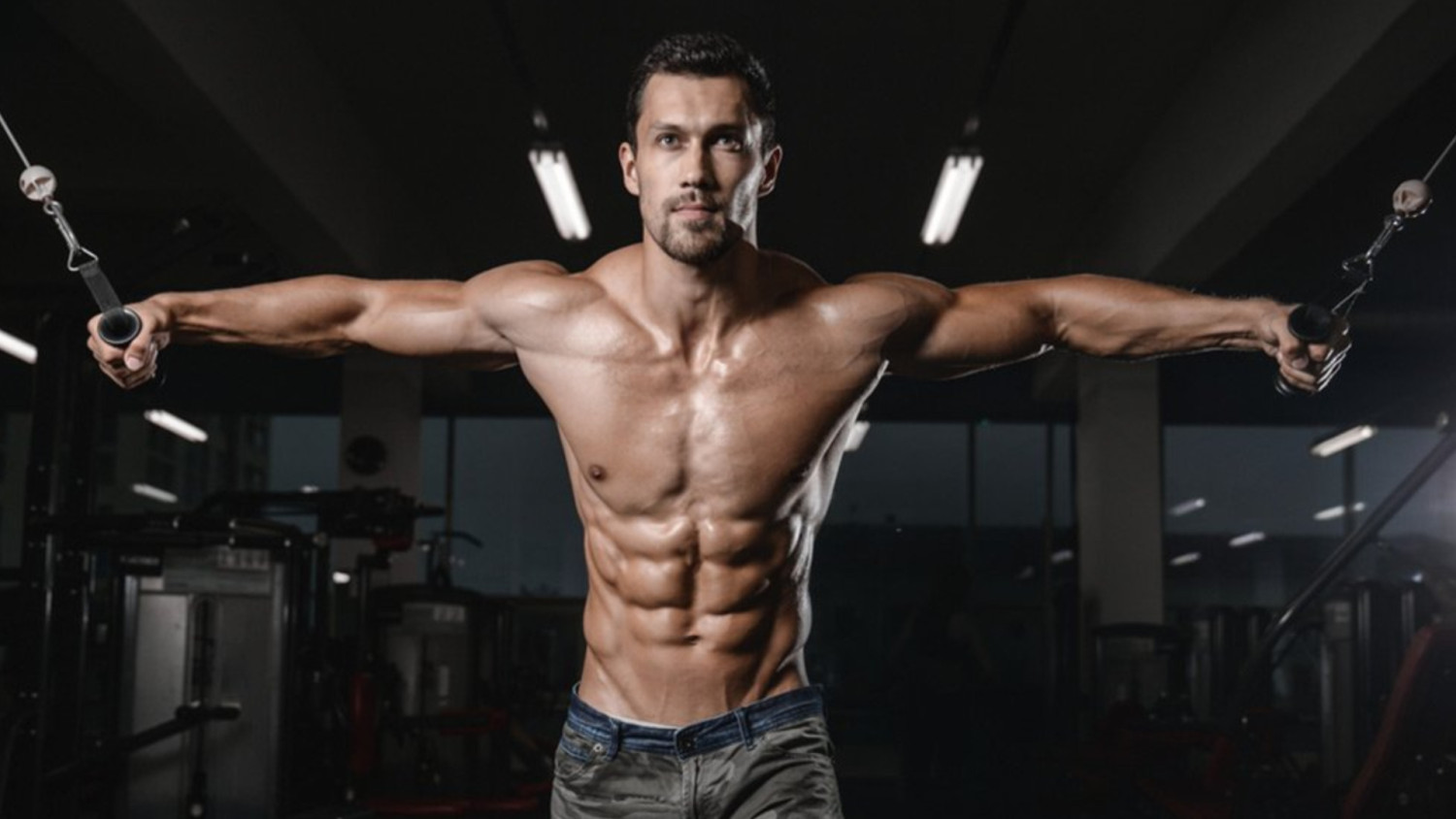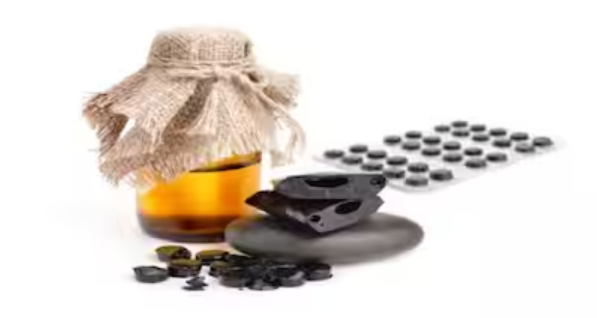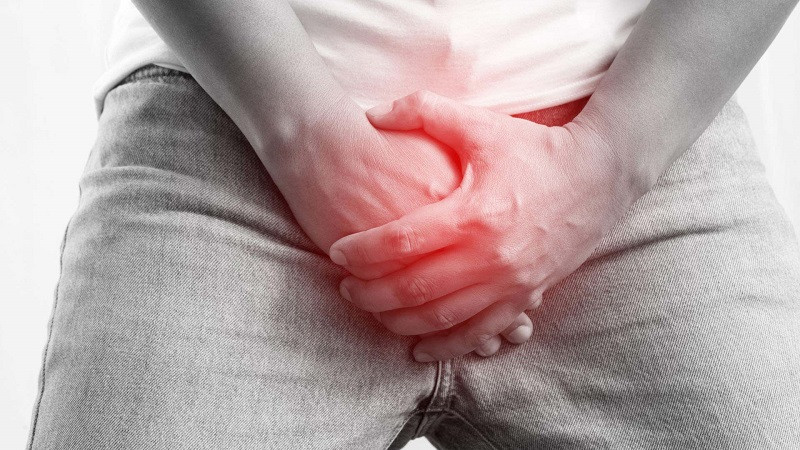Cable Fly: Muscle Worked Variations

Cable fly is one of the best exercises for building bigger and stronger chest muscles.
In order to strengthen your chest muscles, you need to challenge them in different ways. This requires variety, intensity, and frequency.
Chest flies are a great way to add variety to chest exercises and strengthen your pectorals.
We will cover several variations, such as low to mid-cable pec flys, low to high cable flys, high cable flys, and single arm cable flys.
Firstly, we'll examine the chest anatomy and the exercise mechanics that help to effectively target the chest muscle.
Chest Muscles
Pectoralis major and minor are the chest muscles.
Depending on the angle of adduction, the pectoralis major has two heads:
- An upward angle of movement emphasizes the upper, or clavicular head,
- While a lower angle emphasizes the lower, or sternal head of the muscle.
A triangle-shaped muscle, the pectoralis minor is located beneath the pectoralis major, a layer deeper, and pulls the shoulder blades downward.
Cable Chest Fly
The cable chest fly is one of the best chest exercises for strengthening the chest and shoulders as well as training the chest at various angles.
Cable fly exercises can be used to train the upper, inner, and lower chest.
You can target your chest from any angle depending on how you position your arms or adjust the cables.
Muscles can also stretch a lot because of the distance between the body and the machine.
It is much less likely that someone will do it correctly.
It wastes time because the weights selected are often too heavy, causing excessive pressure on the delicate shoulder joint.
Benefits Of Cable Chest Fly
Gain Chest Muscle Activation
Bench presses and cable chest flys activate the chest muscles more than traditional exercises.
Throughout the entire range of motion, the cable machine keeps the muscles active.
Muscle Balance
By targeting the chest muscles from different angles, cable fly improves muscle balance.
Muscle imbalances between the left and right sides of the chest can be corrected with this exercise.
Range Of Motion
Flexibility and range of motion are improved with chest flies.
Throwing a ball or reaching overhead requires a wide range of motion in the chest muscles.
Versatility
There are several ways to do flies, including using different cable attachments, at different angles, and with one or both arms.
By targeting the chest muscles from different angles and at varying levels of resistance, it is a great exercise for targeting the chest muscles.
Joint Friendly
If you have joint discomfort when doing the bench press, cable flys are a great alternative.
As long as the shoulder blades are stable, the cable chest fly changes the angle of the movement enough to limit joint stress.
Constant Stimulation
You have a constant load on your chest muscles throughout the whole range of motion with cable pec flys.
Bench-pressing variations or dumbbell flyes cannot claim that.
Muscle Growth
As a result of the cable setup, your muscles get almost uninterrupted time under tension, and a huge pump - both of which can have an impact on muscle growth.
Provide Variations
With the cable pec fly, you can train your chest from a variety of angles.
Using a low-to-high motion with the cable chest fly exercise targets upper chest fibers, while doing a high-to-low motion targets lower chest fibers.
During cable fly, muscles are worked
Along with its target, the main pec muscle, the cable chest fly primarily targets the pectoralis major muscles.
There are a number of synergist muscles involved in cable fly movement, including the rhomboids, levator scapulae, anterior deltoids, and latissimus dorsi, as well as the biceps brachii, brachialis, and brachioradialis.
Your wrist flexors, obliques, and rectus abdominis are also stabilizer muscles.
As you perform the exercise, your erector spinae muscles act as an antagonist stabilizer, keeping your joints in the correct position.
7 Cable Fly Variations
There are many benefits to doing different variations of the cable chest fly:
- targets different parts of the chest muscles
- Adds variety to your workout routine
- Helps to break through plateaus
- Helps to add variety and prevent boredom.
- Lead to greater muscle growth and definition.
The low to high cable chest fly targets the upper chest muscles, while the incline cable chest fly targets the upper and mid-chest muscles.
The best cable chest fly variation for building a bigger and wider chest.
Standing Cable Fly
A cable PEC fly exercise, also known as a cable crossover fly exercise, helps build large pectorals.
The cable crossover helps build a big chest by keeping tension constant.
The lower and inner chest muscles are developed and defined with this exercise.
Way To Do Standing Cable Fly
- Hold both sides of the handles of overhead pulleys while standing.
- Feel your chest muscles stretching as you bend forward and extend your arms.
- Get a good chest contraction by flexing your arms with elbows slightly bent.
- Pecs can be contracted fully by crossing over the center, unlike chest flies.
Tip
- When relaxing, breathe in, and when contracting, breathe out, keeping your head up.
- At the end of the movement, squeeze your chest.
Low Cable Fly
An exercise that strengthens the chest, biceps, and shoulders, the standing low to high cable fly is a variation of the chest fly.
As a result of the cable's constant tension, the upper and inner chest areas are developed and defined.
For those who wish to develop their upper chest muscles, the cable provides much-needed stress.
Way To Do Low To High Cable Fly
- In a standing position, set both pulleys as low as possible and select the desired weight.
- Take hold of both handles of overhead pulleys.
- Feel your chest muscles stretch as you bend forward slightly.
- Pull your hands in wide arcs in front of you, pausing when they touch.
- Reverse the process by slowly lowering back to the starting position and repeat for as many repetitions as desired.
Tip
- Stagger your stance to maintain your balance.
- Bring the handles together as you breathe in.
- As you lower your arms, control the weight.
High Cable Fly
A high-to-low cable fly is a variation of the chest fly that targets your lower chest.
This exercise machine exercise targets the chest primarily, as well as the shoulders and triceps to a lesser extent.
To target the chest from different angles, it is often combined with other flyes.
Way To Do High To Low Cable Fly
- Choose the desired weight and set both pulleys as high as possible.
- Grasp the handles neutrally in a standing position.
- Feel your chest muscles stretching as you bend slightly forward and extend your arms.
- When your hands touch, bend your elbows slightly and pull your hands (high to low) in wide arcs in front of you.
- Once you have completed the repetitions, slowly lower back to the starting position and repeat.
Tip
- Maintain some tension in your abs and avoid excessively arching your lower back.
- Consider form before choosing a heavy weight.
- Breathe out as you pull the handles together.
Incline Cable Fly
The incline cable fly is one of the best exercises for isolating the upper chest muscles.
Using cables instead of dumbbells allows for constant tension, which builds upper chest fibers.
Use this exercise as an accessory to your heavy compound lifts.
Way To Do Incline Cable Fly
- Lie on the bench with your feet flat on the ground and set an incline bench at a 30- to 45-degree angle.
- Hold the cable directly over your upper chest while raising your arms straight up from your shoulders.
- Slowly lower your arms out to your sides until your wrists reach shoulder level or slightly higher.
- Using your pec muscles, pull your arms back toward your midline.
Tips
- To hit the upper chest from different angles, position the bench differently.
- When your hands are together, contract your pec muscles.
- Don't go more upright than 30–45 degrees because the stress will shift to your shoulders instead of your chest.
Decline Cable Fly
One of the best exercises for isolating the lower chest muscles is the decline cable fly.
Compared to dumbbell chest flyes, it has a more even resistance curve, so the load is more consistent throughout the range of motion.
Cable decline flyes maximize range of motion at the bottom while also activating muscles at the top.
By using cables instead of dumbbells, this exercise allows for constant tension to help build lower chest fibers.
Way To Do Decline Cable Fly
- A decline bench should be set at a 30-degree angle.
- You should lie on the bench with your feet flat on the footpad or roller.
- Hold the cable handle directly above your chest with your arms straight up from your shoulders.
- Lower your arms out to your sides until your wrists reach shoulder level or slightly higher.
- Use your lower pec muscles to draw your arms back together toward the midline of your body.
Tips
- As you exert yourself, exhale.
- Hold your hands together and squeeze your chest muscles.
- A 30-degree (decline) angle should be set on the bench.
Single Arm Chest Fly
An inner chest fly is a unilateral variation of the fly. It is used by those who wish to focus on the inner chest.
When exercising, resistance is brought further across the body and past the midline in order to force an intense peak contraction in the inner pecs.
Way To Do Single Arm Chest Fly
- Place the pulleys in the high position, select the resistance, and take a handle.
- Make sure your elbow is bent slightly as you extend your arm.
- While keeping your upper body straight, pull your hand to the midline of your chest.
- To complete one rep, hold for a second and return to the starting position.
Tips
- For maximum pec activation, keep your elbows slightly bent.
- Keep your core engaged throughout the movement and breathe deeply
- Avoid jerky movements and keep your motions controlled.
Seated Cable Pec Fly
To target the pectoral muscles, the Cable chest fly uses a cable stack and an upright bench.
The ability to push your torso against the bench allows you to focus on the mind-muscle connection and move more weight.
Cable pec fly exercises provide constant resistance and help bodybuilders develop chest muscles.

Way To Do Seated Cable Pec Fly
- Place the handles of each cable directly in front of your chest while seated on a bench
- Feel the stretch in your chest muscles as you extend your arms.
- Keeping your elbows slightly bent, flex your arms and contract your chest.
- In contrast to pec fly, you can cross over the center to get full pec contraction.
Tip
- Hold your hands together and contract your chest muscles.
- To protect your shoulder joint, keep your arms bent at all times.
- When relaxing, breathe in, and when contracting, keep your head up.
Cable Chest Fly Into A Workout Program
Here are some tips to help you incorporate cable chest fly into your workout routine.
Sets And Reps
Set:
- Beginners: ~10 sets per week.
- Intermediate: ~15 sets per week.
- Advanced: ~20 sets per week.
Reps:
Work with the best rep ranges and loads.
- 6–8 reps for strength
- 8–15 reps for muscle hypertrophy
- 15-20+ for endurance
Beginners should aim for 3–4 sets of 8–12 reps each, resting 1–2 minutes between sets.
Frequency
Depending on your overall workout schedule and goals, you can perform it 1–2 times per week.
Exercises to Combine with Other Chest Exercises
For a good chest workout, combine cable fly with bench press, push-ups, and dumbbell flys.
To target the chest muscles differently, vary the angles and resistance when combining exercises.
Finisher
At the end of your chest workout, you can perform cable fly variations.
Exercise exhausts your chest muscles and increases blood flow, resulting in greater muscle growth and definition.
Alternative Of Cable Flyes
Fly can be performed at different angles to target different areas of the chest.
A cable chest fly performed at a lower pulley angle targets the upper chest, while one performed at an upper pulley angle targets the lower chest.
Seated Machine Fly
Chest is the primary target of machine fly exercises.
You can try a variety of machine fly variations, which may require different types of equipment, or may not require any.
Dumbbell Fly
Dumbbell fly exercises isolate and strengthen the muscles of the chest through a chest fly movement pattern.
As the goal of the exercise is to isolate the chest for aesthetic reasons, it is often considered a classic bodybuilding exercise.
Most significantly, the dumbbell fly targets the inner chest area of the pecs.
Squeeze Press
In addition to targeting the inner chest, the squeeze press also targets the shoulders and triceps to a lesser extent.
You can add the squeeze press to your chest workout as an alternative to the cable fly.

Push Ups
To build your upper body, shoulders, chest, and arms, push-ups are the best bodyweight calisthenics exercise.
Intensity is the key to building muscle and strength when doing push-ups in various forms.
Frequently Asked Questions
Do Cable Chest Flyes Outperform Dumbbell Flyes?
Exercises that work the chest muscles well include cable chest fly and dumbbell chest fly.
Cable chest fly, on the other hand, provides a wider range of motion and constant tension throughout the exercise.
Is it possible for beginners to do cable chest fly?
Beginners can perform cable chest flies, but it's important to start with a lighter weight and focus on proper form to avoid injury.
Is it better to do cable chest fly before or after bench press?
Do a bench press before doing a cable chest fly.
A bench press is a compound movement that requires more energy and concentration.
In your workout routine, you can alternate between the two exercises.
Is it possible to do cable chest fly without a cable machine?
Cable chest flies require a cable machine and a specific cable attachment, so they cannot be performed without them.
Other chest-toning exercises, such as push-ups and chest dips, can be performed without equipment.
Takeaway
For those who want a well-shaped chest and thickness, cable flyes are just as important as bench presses.
Strengthen your chest, shoulders, and arms with the cable chest fly.
To build strength, start with a lightweight and increase the weight each week.









